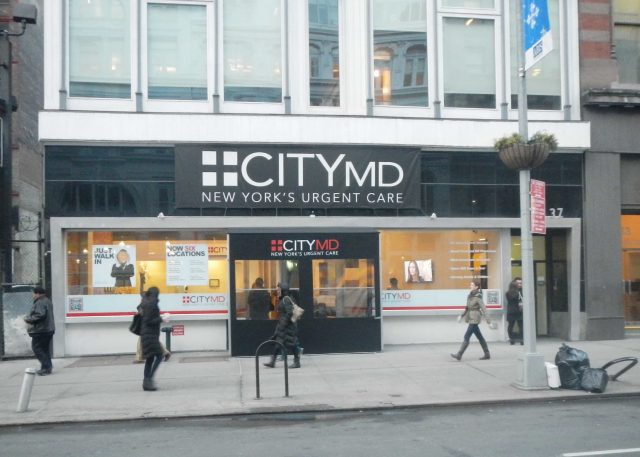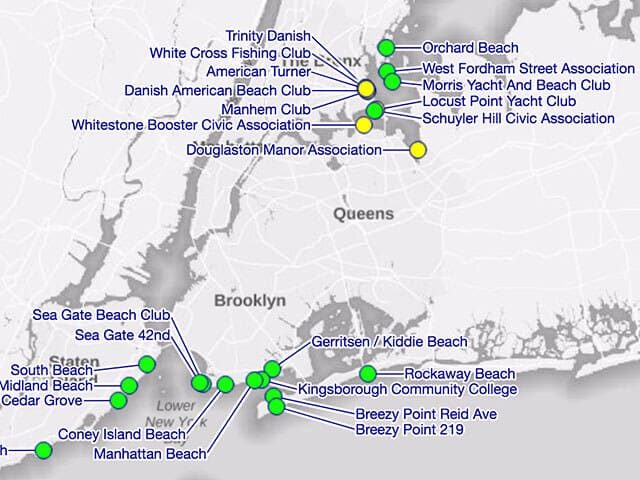

Welcome to the Brokelyn Files where our resident unlicensed P.I. Sam Weiss answers the local questions you never thought to ask. Got a lead on a Brooklyn mystery? Write us in the comments below.
Urgent care — it’s medical treatment for those who don’t quite need an emergency room but who can’t see their primary care physician. Urgent care clinics are ideal for people like me (that is, disorganized hypochondriacs) and they’ve popped up in practically every neighborhood and on every corner in New York. But where did they all come from? And why? Why now? And are they actually any good as an alternative to seeing a normal doctor? This week, the Brokelyn Files aims its metaphorical magnifying glass at the medical industry to answers those questions and more.
First off, what we talk about when we talk about urgent care. An urgent care clinic is a medical facility, often with longer hours than a normal clinic, which sees walk-in patients without an appointment who, theoretically, need care that isn’t urgent enough for the E.R., but which can’t wait for a normal doctor’s schedule. New York City is lousy with these clinics, many of them belonging to chains like CityMD. According to the Urgent Care Association of America (the very existence of which speaks volumes about the industry), urgent care clinics originated in the late 1970’s, but didn’t gain popularity until the last five to ten years. Now the industry grows at a pace of about 300 to 600 centers per year nationally, reaching a total of about 7,400 last year, according to the UCAOA, and the industry is now worth about $14.5 billion, according to The New York Times.
But why? And if they’ve been around since the 70’s, why are they just blowing up now? The UCAOA chalks the recent proliferation up to changes in the larger medical field restricting access to other kinds of treatment, explaining the phenomenon thusly: “Recent industry growth (last 5 years) seems to be fueled by a confluence of events and awareness – primary care being somewhat hard to come by, emergency room wait times and overcrowding spreading, physicians seeing and acting on these needs in their communities, and patients driving their popularity. Most recently, the private equity community has noticed urgent care as a viable business model and their investments have also fueled growth from within the industry itself.”
Anecdotally, as an 18 to 35-year-old, a lot things are aimed squarely at me, and urgent care certainly makes a lot of sense in my life. My peers and I are used to getting things on demand — food delivery, taxis, potential romantic matches — so we’ve lost the part of our brains that allows patience for things like making a doctor’s appointment and then waiting for it to come. A walk-in doctor just makes sense to me. Plus, thanks to the Affordable Care Act, my 26-and-under compatriots are still leeching off of their parents’ health care plans, so maybe it doesn’t really matter what kind of treatment they get anyway. And New York City specifically is a place of germs and anxiety, so the more places there are to ask, “does this look infected?,” the better.
But that all still begs the question, are these clinics actually any good? Are they really a practical alternative to seeing a primary care physician or are we sacrificing quality for convenience? And when we’re talking about medical treatment, is “sacrificing quality” as terrifying as it sounds?
First, the good: Urgent care facilities are still medical care facilities: they are legally obligated to be staffed by doctors who are board certified, their equipment is up-to-date, they’re not getting bombarded with malpractice suits left and right and, compared to emergency rooms, they’re generally relatively amply-staffed and not overcrowded. And even compared to a traditional doctor’s office, no appointments means that if the urgent care doctor gets caught up with your weird ear infection, they don’t have to rush off to their next patient. Plus, because they need to be equipped to treat a variety of ailments, everything is in one place; you don’t need a referral to get an x-ray, you can just get an x-ray.
But, alas, there are still some obvious downsides: Even if they’re less rushed than the E.R., there are still far more patients going in and out of an urgent care facility in a day than there are going in and out of the average doctor’s office, which might mean less dedicated attention overall. And, unless you’re a particularly avid hypochondriac, these doctors don’t know you; they don’t know what your ankle looked like before you twisted it or that your heart rate always goes up when you see someone in a white coat. Plus, while it’s convenient to see a doctor after normal hours or on the weekend, many clinics slap on extra fees for visits during those hours, so a bill can start to stack up if you’re not careful.
All in all, even if an urgent care clinic has a few hazards and feels a little more chaotic than a traditional doctor’s office, it makes a lot of sense in 2017 New York City, for better and for worse. If it feels like there are way more clinics than there were five years ago, you’re not crazy, they’re just basically the Seamless of getting rashes checked out. And, just as Seamless every night is a delicious yet dangerous proposal, urgent care is not a perfect alternative to seeing a regular doctor, but it’s also not as haphazard as you might imagine.
One Response to
Leave a Reply




For those of us who are over 26, broke, use Sherpaa. For something like $25 a month I get access to medical care through an app. Better than booking appointments, waiting and all that co-pay, deductible BS. They’ve served me well.